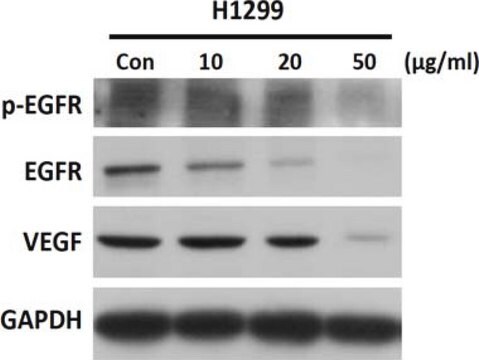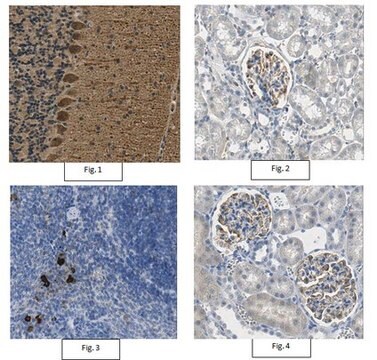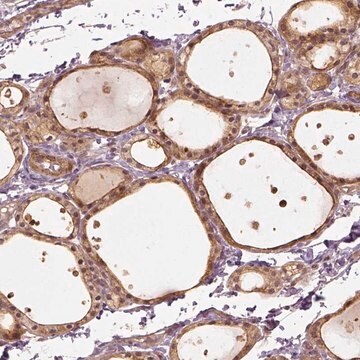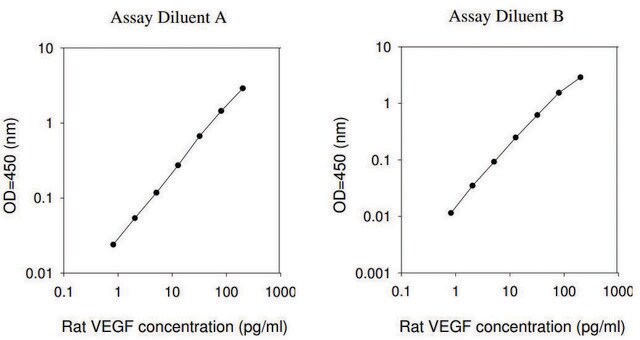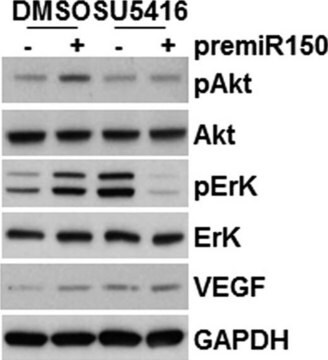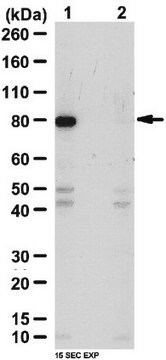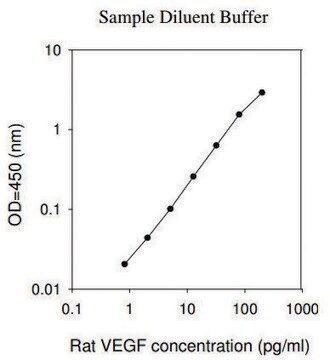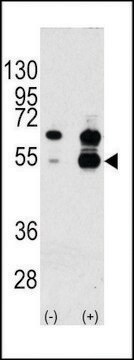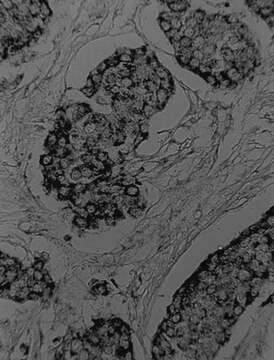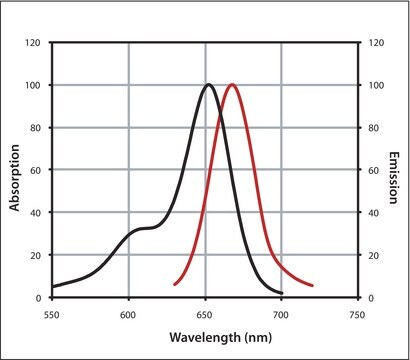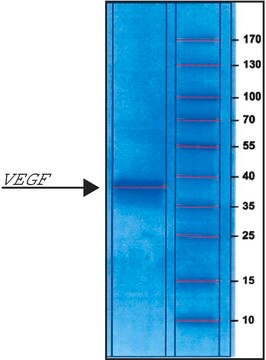07-1420
Anti-VEGF Antibody
from rabbit, purified by affinity chromatography
Sinónimos:
Vascular permeability factor
About This Item
Productos recomendados
origen biológico
rabbit
Nivel de calidad
forma del anticuerpo
affinity purified immunoglobulin
tipo de anticuerpo
primary antibodies
clon
polyclonal
purificado por
affinity chromatography
reactividad de especies
mouse, human
técnicas
ELISA: suitable
immunohistochemistry: suitable (paraffin)
western blot: suitable
isotipo
IgG
Nº de acceso NCBI
Nº de acceso UniProt
Condiciones de envío
dry ice
modificación del objetivo postraduccional
unmodified
Información sobre el gen
human ... VEGFA(7422)
Descripción general
Especificidad
Inmunógeno
Aplicación
Neutralization: To yield one-half maximal inhibition [ND50] of the biological activity of mouse VEGF (50.0 ng/mL), a concentration of 1.0-2.0 µg/mL of a previous lot of this antibody was required.
ELISA: A concentration of at least 0.5 µg/mL (100 μL/well) is required to detect 0.2-0.4 ng/well of recombinant mouse VEGF using a previous lot of this antibody.
Optimal working dilutions must be determined by the end user.
Signaling
Growth Factors & Receptors
Calidad
Western Blot Analysis:
1:500 dilution of this lot detected VEGF on 10 μg of Huvec lysates.
Descripción de destino
Ligadura / enlace
Forma física
Almacenamiento y estabilidad
Handling Recommendations: Upon first thaw, and prior to removing the cap, centrifuge the vial and gently mix the solution. Aliquot into microcentrifuge tubes and store at -20°C. Avoid repeated freeze/thaw cycles, which may damage IgG and affect product performance.
Nota de análisis
Huvec cell lysate
Cláusula de descargo de responsabilidad
¿No encuentra el producto adecuado?
Pruebe nuestro Herramienta de selección de productos.
Código de clase de almacenamiento
13 - Non Combustible Solids
Clase de riesgo para el agua (WGK)
WGK 3
Punto de inflamabilidad (°F)
Not applicable
Punto de inflamabilidad (°C)
Not applicable
Certificados de análisis (COA)
Busque Certificados de análisis (COA) introduciendo el número de lote del producto. Los números de lote se encuentran en la etiqueta del producto después de las palabras «Lot» o «Batch»
¿Ya tiene este producto?
Encuentre la documentación para los productos que ha comprado recientemente en la Biblioteca de documentos.
Los clientes también vieron
Nuestro equipo de científicos tiene experiencia en todas las áreas de investigación: Ciencias de la vida, Ciencia de los materiales, Síntesis química, Cromatografía, Analítica y muchas otras.
Póngase en contacto con el Servicio técnico